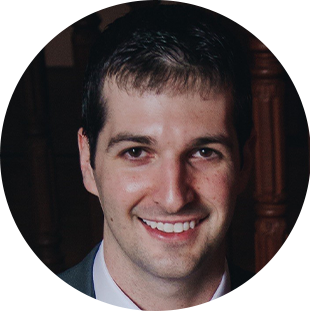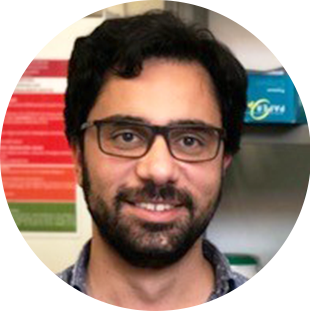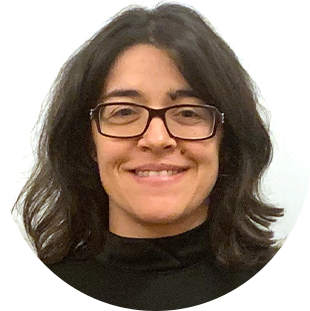
AO Spine offers young researchers from across the world opportunities to advance ground-breaking studies through grants and awards. The global AO Spine Discovery and Innovation Award (DIA) was first offered in 2019 to support young scientists and clinicians under 40 years of age in the field of spine research and to encourage global participation in the AO Spine Knowledge Forums (KF). We collected impressions from three of the winners, as their studies are being finalized.
The 2019 DIA attracted 83 applications, and the successful 11 were selected following a blinded peer review process and scientific evaluation by AO Spine Regional Research Officers and KF Steering Committee Members. The winning studies not only demonstrated relevance and feasibility, but also took a novel and innovative approach, with a sharp focus on making a tangible difference to spine care worldwide.
The DIA winners were first introduced to the KF at the 2019 Global Spine Congress in Toronto, Canada, and continued as KF Associate Members of the corresponding KFs, enjoying close mentorship, collaboration, and peer support as they progressed their studies. Ultimately, the award aims to bring some of the world’s brightest young scientific minds into the AO Spine community: “We want to engage and integrate young scientists from different regions into the KFs,” explains AO Spine Research Commission Chairperson Dino Samartzis. “The applicants must have a desire to perform high-quality, clinically-relevant research that will ultimately have an impact on the global stage.”
As their research studies conclude, we caught up with three of the winners to find out how the award has benefited them.

Tim O’Connor
Marcus Neuroscience Institute, Boca Raton, FL, USA & University at Buffalo Neurosurgery, Buffalo, NY, USA
“Tension Parameters in Junctional Tethers for Proximal Junctional Kyphosis (PJK)”
There were three main stages to my research. The first was to determine the maximum tension that could be applied throughout the thoracolumbar spine before spinous process fracture or tether failure. There were no encompassing measurements of this kind, so I evaluated pull-out forces using an explanted cadaveric spine with the posterior ligamentous complex intact. After developing a customized force gauge, the average pull-out force of spinous processes from T1–T12 was found to be 290 N. The mid-range of the thoracic spine from T4–T8 demonstrated the lowest pull-out forces, with pull out strength increasing both rostrally and caudally from the midthoracic spine.
The second step was to create a novel biomechanical model to study the effects of junctional tethers in PJK. My team and I created a custom machine that could cyclically flex an explanted spine with a pneumatic actuator, while a counterweight provided a constant extension force to return to neutral position. An optical camera was programmed to track relative change of angles of individual endplates. The third stage was to determine if there was a quantifiable protective effect of the tether above a certain tension parameter. We found that junctional tethers that were tightened to a tension of 75 N or more demonstrated a large protective effect at all experimental levels studied. In the rostral thoracic spine, a junctional tether tightened to 150N was more protective than a tether tightened to 75N.
"The models and methods applied in this research had never been completed before, so it was rewarding to work from the ground up, one stage at a time to lay the foundation for the next discovery."
The models and methods applied in this research had never been completed before, so it was rewarding to work from the ground up, one stage at a time to lay the foundation for the next discovery. Our findings suggest that surgeons can target the tension of junctional tethers depending on the location of interest. Using this information, improvements in current tether technology can be developed that reduce the occurrence of PJK following fusion, and ultimately improve patient outcomes.
It’s an honor to be a part of the KFs. It’s a great opportunity to work with the leaders in our field to collaborate on solving the greatest challenges in modern spine surgery. The DIA is a catalyst to solving a problem that makes a difference in people’s lives—this is how you affect change. I plan to continue my research started with the AO Spine DIA grant and the University at Buffalo as I transition to my new position as the Director of MIS and Robotic Spine Surgery at the Marcus Neuroscience Institute, an innovative nexus of Neurosurgical care. I am looking forward to the ongoing work with the KF to advance new treatment paradigms.

Marco Palanca
Alma Mater Studiorum – Università di Bologna, Bologna, Italy
“Stabilize or Not to Stabilize: biomechanics-based guidelines in case of indeterminate SINS”
I am a mechanical engineer by profession and my study was predicated on a problem facing clinicians: how to define instability of the spine in cases classified as ‘indeterminate’ by the Spinal Instability Neoplastic Score (SINS). It is a multi-faceted question and there is currently no biomechanical evaluation process for this type of problem—surgeons do not have the time to undertake a biomechanical examination of each patient.
My study involved testing 50 vertebra and undertaking many hours of lab analysis to understand whether there’s a correlation between the feature of the tumor and the biomechanical outcomes. It provides another tool alongside SINS to potentially personalize treatment of cancer patients. The next stage of my research is to analyze when it is appropriate to stabilize.
"With patients now having higher survival rates, the focus is on their quality of life. (…) This biomechanical view offers an additional perspective to consider alongside the clinical case."
With patients now having higher survival rates, the focus is on their quality of life. Surgeons consider many parameters in deciding whether to stabilize, as it’s a very long surgery and it’s not always possible to identify which patients are at risk of fracture or paralysis. This biomechanical view offers an additional perspective to consider alongside the clinical case.
I have found the experience of working with the KF really valuable. Generally, clinicians work with clinicians and engineers with engineers, so it’s nice that AO Spine trusted my project and is open to this kind of collaboration, which I think is really important for improving patient outcomes. I hope to continue to work with AO Spine as my research develops.
Palanca M, Barbanti-Bròdano G, Marras D, Marciante M, Serra M, Gasbarrini A, Dall'Ara E, Cristofolini L. Type, size, and position of metastatic lesions explain the deformation of the vertebrae under complex loading conditions. Bone, 151, October 2021.

Carla Cunha
i3S – Instituto de Investigacão e Inovacão em Saúde, Porto, Portugal
“McDISC Macrophage therapy for intervertebral disc herniation”
This study aimed to demonstrate that macrophages have a key role in intervertebral disc (IVD) herniation, using a rat animal model. To do this we used two complementary approaches—first, we delivered macrophages into the herniated IVD, and second, we systematically depleted macrophages. The study is now complete, and we have successfully demonstrated that the administration of monocyte-derived macrophages could help in reducing the size of the intervertebral disc hernia. Moreover, we demonstrated that systemic depletion of macrophages, using clodronate administration, reduced the size of the hernias formed. Globally, this represents a proof-of-concept study that demonstrates that macrophages have a key role in hernia regression.
IVD herniation is the main cause of spinal surgery worldwide and represents a high socioeconomical burden. What we propose is to develop a minimally invasive therapy for those patients that do not have their hernias regressed with conservative treatment. I am a biomedical researcher who normally does not have contact with patients, but with the support of clinicians and institutions involved in patient care, this therapy could result in an outstanding innovation in spinal surgery and positive impact on patients’ quality of life.
"The DIA program allowed me to obtain my first independent funding as a researcher, so it had a huge impact on my career."
The KF is highly productive, yet relaxed and friendly, and in AO Spine I have found a place of discussion among the leading spine experts in the world. The DIA program allowed me to obtain my first independent funding as a researcher, so it had a huge impact on my career. I am now more experienced in managing a team and managing funds, so it empowered me to be a better researcher.